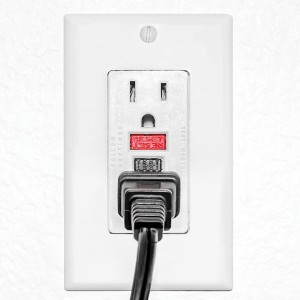Acronyms, such as kWh, are common in the world of electricity. Two of these acronyms — GFCI and AFCI — can make a life-or-death difference for you and your family.
What is a GFCI?
You may already be familiar with GFCIs or ground-fault circuit interrupters. You plug your electrical appliances into them daily. Electrical outlets with GFCIs have “reset” and “test” buttons associated with them and are found in bathrooms, kitchens or laundry rooms.
A GFCI is a fast-acting circuit breaker that shuts off electricity in the event of a ground fault (an unintentional electrical path between a power source and a grounded surface). It compares the amount of current going to and returning from equipment along the circuit conductors. If that current is out of balance, the GFCI senses this and shuts down the circuit — stopping the flow of electricity.
How does a GFCI keep you safe? In areas of your home where water and electricity could mix, GFCIs can prevent you, or your loved ones, from shock or electrocution. Since 1971, the National Electric Code has required GFCIs. Own an older home without GFCIs? Consider installing them.
“According to the Consumer Product Safety Commission, more than two-thirds of the 300 annual electrocutions nationwide could be prevented with the use of GFCI protection,” said Tom VanParis, CEO of Indiana Electric Cooperatives.
What is an AFCI?
As with GFCIs, AFCIs, or arc-fault circuit interrupters, are designed to keep you safe — only in a different way. An AFCI prevents an electrical fire in your home due to “arcing.” An arc fault is an unintended arc created by current flowing through an unplanned path. Arcing creates high-intensity heating, resulting in burning particles that can ignite nearby material like wood or insulation.
For example, when using that iron to smooth out the wrinkles in your shirt, electricity can leak out of a damaged or decaying wire and cause heating where the device plugs into the wall (arcing). This can lead to a quickly spreading fire behind the wall. AFCIs sense the electricity leak and shut electricity off before overheating happens.
In 2014, the National Electric Code arc-fault circuit interrupter protection was expanded to include kitchens and laundry room areas in addition to other areas specified in previous versions of the code for dwelling units.
“Between 2002 to 2004, an estimated annual average of more than 18,200 fires were attributed to home electrical wiring according to the Consumer Product Safety Commission,” VanParis said. “These fires resulted in an average of more than 120 deaths per year. Arcing faults are one of the causes of these fires.”
In layman’s terms, GFCIs prevent shock and electrocution, while AFCIs prevent electrical fires. Both are equally important in keeping you safe. Contact a qualified electrician about installing them in your home.
Sources: Consumer Product Safety Commission, Occupational Safety and Health Administration, National Electrical Manufacturers Association, deckerhomeservices.com, Eaton.com






